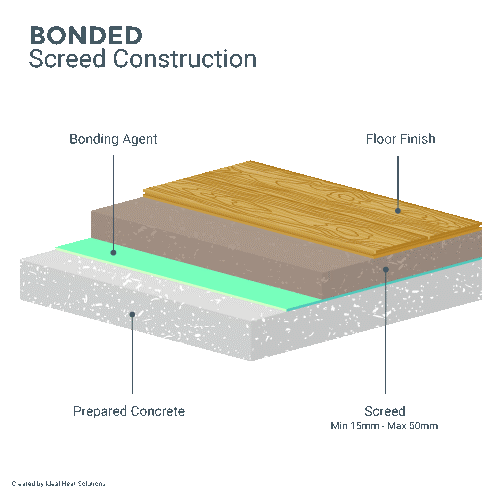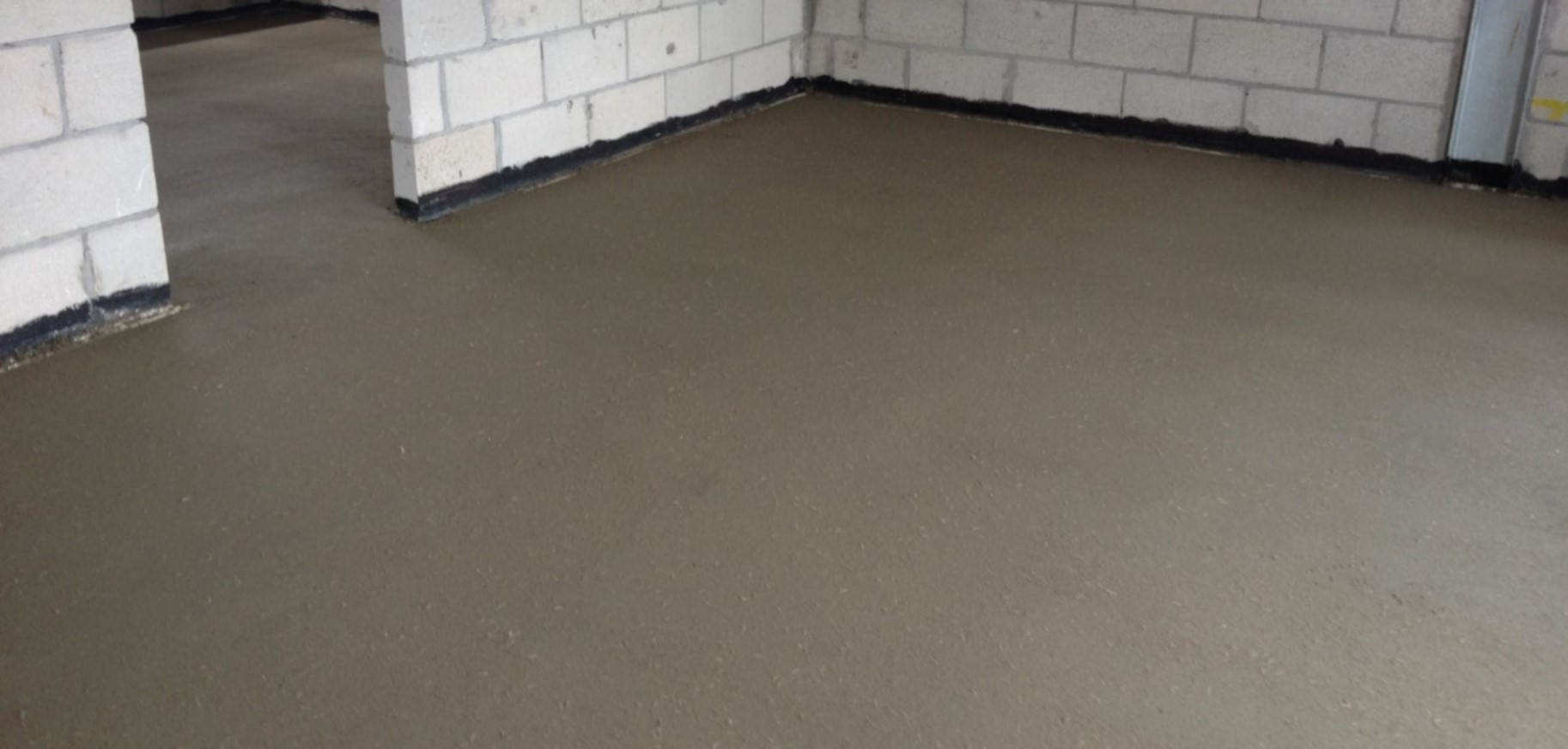Screed is a thin enough top layer of material laid over a concrete subfloor, which is traditionally made of sharp sand and cement, like concrete. Industrial screed can be used for heavier duty applications by using more coarse aggregate of between 6-10mm.
It is used to cover the structural concrete floor, and can be applied to both solid, in-situ or precast concrete floor slabs. It can also be placed on top of an insulating material, and is ideal to cover heating pipes under the floor.
Its purpose is to provide a smooth, flat surface finish for other materials to then be laid on top of, such as tiling, carpets or timber. Not only that, but it can also help to even out the surface of the floor, to ensure it is safe and level. As a general rule, the level of the floor should not vary more than 5mm over a 3-metre space.

Screed and Concrete: What’s the difference?
Concrete and screed are both made of a mixture of cement, aggregates and water, but the difference is that concrete is much rougher and coarser, providing increased strength, while fine aggregate is used for making smoother screed. For Ready mix screed Kent, visit a site like https://vmcltd.com/screed/
Screed Types
There are three main types and choosing which one is needed depends on the base: it can form a bond directly to the base, lie unattached on top of a damp proof membrane, or applied as a floating layer of insulating material, such as underfloor heating.
The minimum thickness of each type of screed will vary depending on the application. Generally, the heavier duty applications, such as industrial uses or heavy traffic areas, a thicker screed would be needed.
But as a rule of thumb, for light, domestic application, the minimum thickness should range from 25 mm for normal bound screed to 65mm for floating screed or screed over underfloor heating pipes. It is always recommended that you consult a structural engineer or builder who knows the specific requirements of your building site. If required, the screed can also be reinforced with fine metal mesh, or a fine glass fibre polypropylene mesh.

Delivering screed
Depending on the type of screed that you need, it can normally be delivered in several different ways. Often the screed is mixed to the desired consistency and then delivered on site ready for wheelbarrow transportation to required location. Alternatively, some companies provide screed pump specialists. A screed pump is not quite the same as a concrete pump, instead showering dry screed into the required position.
